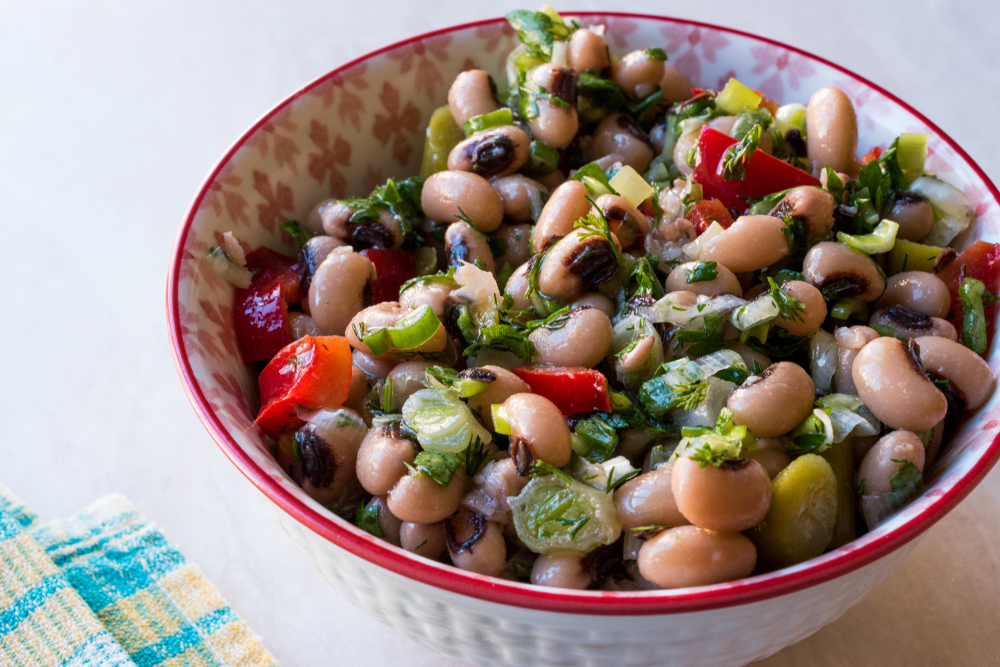Black-eyed peas are beans that are native to Africa where they’ve been popular since the Middle Ages. In the United States, they have become a staple of the soul food culinary tradition due to their historical association with African Americans. European slave owners fed the beans to enslaved Africans during the journey to America, and the beans were a frequent slave ration once in the States as well.
Also known as cowpeas, black-eyed peas are a good luck food in African and Jewish cultures. They are mentioned in the Jewish religious text the Talmud, written in 500 CE, as a customary food eaten in celebration of Rosh Hashanah, the Jewish New Year. Africans believed the “black eye” of the pea would protect against the evil eye—a negative spell cast by enemies—and symbolized fertility since they increased in size when cooked. In the American South, eating black-eyed peas on New Year’s Day is thought to bring prosperity, and they are commonly eaten with greens, which symbolize money. This tradition spread after the Civil War, with the peas also symbolizing the emancipation of slaves, who were officially freed on New Year’s Day after the war’s end.
Recipe Servings: 2
+ 1 hour resting
Ingredients
- 1 large tomato, diced
- ½ medium red onion, finely chopped
- 1 small red bell pepper, finely chopped
- 1 jalapeño, finely chopped
- 2 Tbsp green onion, chopped
- 2 Tbsp fresh parsley, chopped
- 2 cans (15 oz each) black-eyed peas, drained
- ¼ cup rice wine vinegar
- ¼ cup canola oil
- ½ tsp sugar
- Salt, to taste
- Freshly ground black pepper, to taste
Directions
- Combine tomato, red onion, bell pepper, jalapeno, green onion, parsley, and black-eyed peas in large bowl.
- Whisk together rice wine vinegar, oil, sugar, salt, and pepper in a small bowl.
- Toss vegetables with dressing and let it rest in refrigerator for at least 60 minutes and up to 8 hours before serving.
Recipe introduction and directions © Copyright 2016-2026 World Trade Press. All rights reserved.


